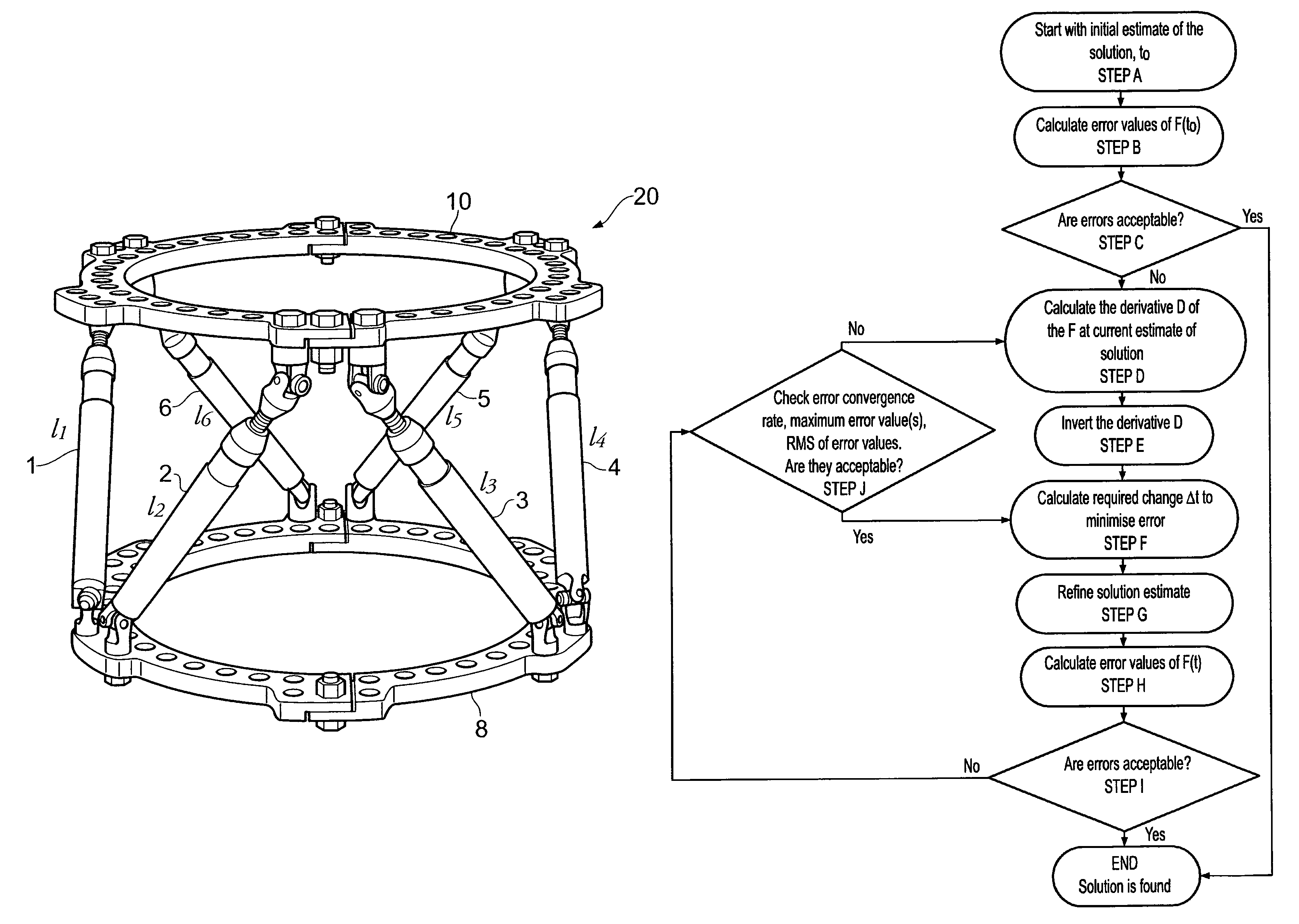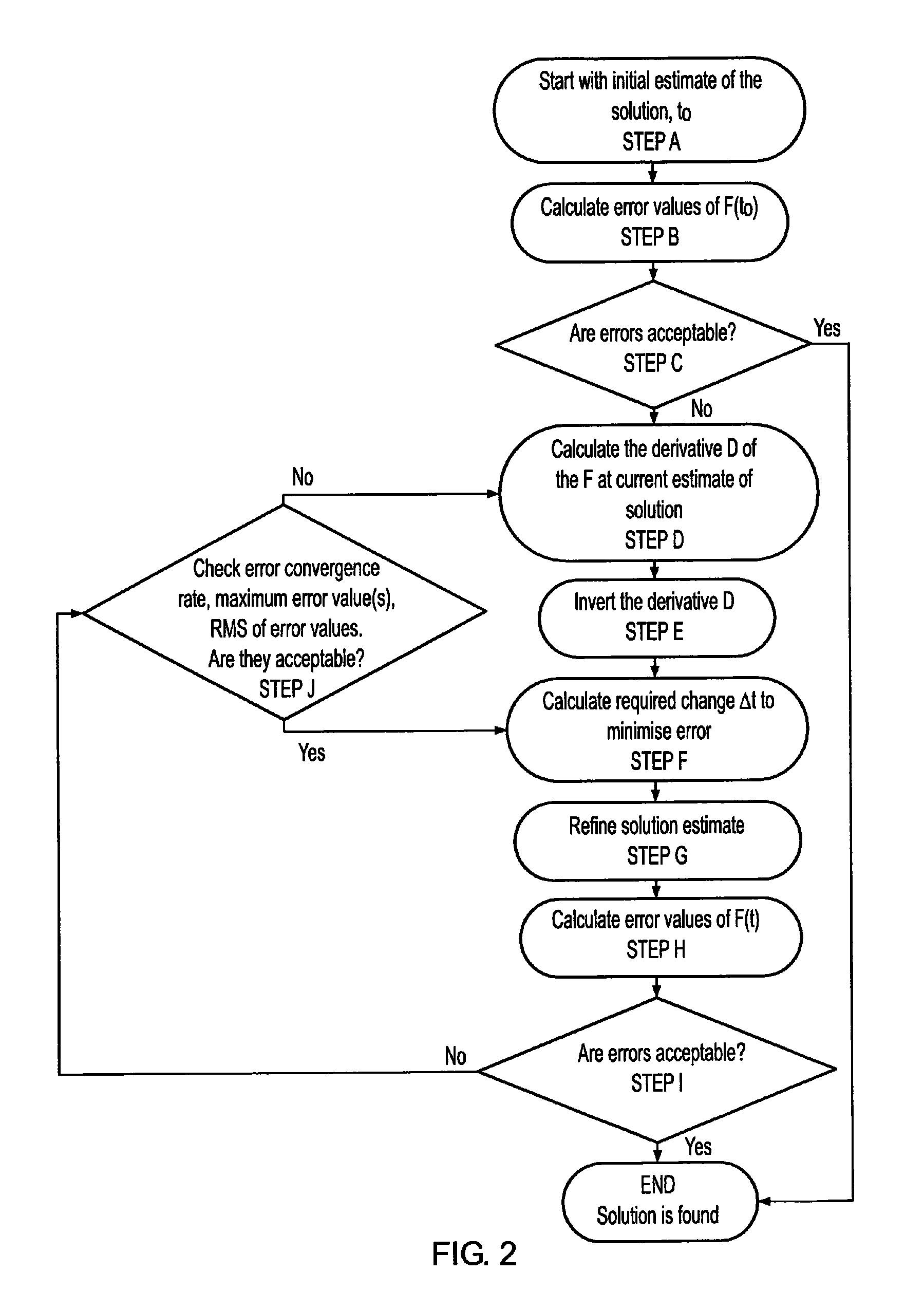Analysis of parallel manipulators
a technology of manipulators and parallel lines, applied in the field of parallel manipulators, can solve the problems of difficult equations, inability to solve problems such as equations, inability to use practical applications, and inability to determine the position and orientation of the platform, so as to achieve the effect of ensuring accuracy, ensuring accuracy, and ensuring accuracy
- Summary
- Abstract
- Description
- Claims
- Application Information
AI Technical Summary
Benefits of technology
Problems solved by technology
Method used
Image
Examples
Embodiment Construction
; FURTHER OPTIONS AND PREFERENCES
[0019]The present invention can be applied to the rapid solution of the forward, or direct, kinematics of the Generalised Stewart Platform, also known as a hexapod. In particular, an embodiment of the current invention will be described as applied to a Taylor Spatial Frame (TSF), for example manufactured by Smith & Nephew Plc. However, it should be noted that the present invention could be applied to other systems based on Stewart Platforms, or six degree parallel manipulators / actuators e.g. ‘shaking tables’, flight simulators and relevant manufacturing systems.
[0020]FIG. 1 shows an embodiment of a TSF, having a base 8 and a platform 10, interconnected by six links, 1-6. The connections of the links to the platform and base do not necessarily have to be placed symmetrically. They can be placed arbitrarily, and they do not have to lie in plane. Actuators can vary the length l1 to l6 of each of the links 1 to 6, and the actuators may be controllable me...
PUM
 Login to View More
Login to View More Abstract
Description
Claims
Application Information
 Login to View More
Login to View More - R&D
- Intellectual Property
- Life Sciences
- Materials
- Tech Scout
- Unparalleled Data Quality
- Higher Quality Content
- 60% Fewer Hallucinations
Browse by: Latest US Patents, China's latest patents, Technical Efficacy Thesaurus, Application Domain, Technology Topic, Popular Technical Reports.
© 2025 PatSnap. All rights reserved.Legal|Privacy policy|Modern Slavery Act Transparency Statement|Sitemap|About US| Contact US: help@patsnap.com



